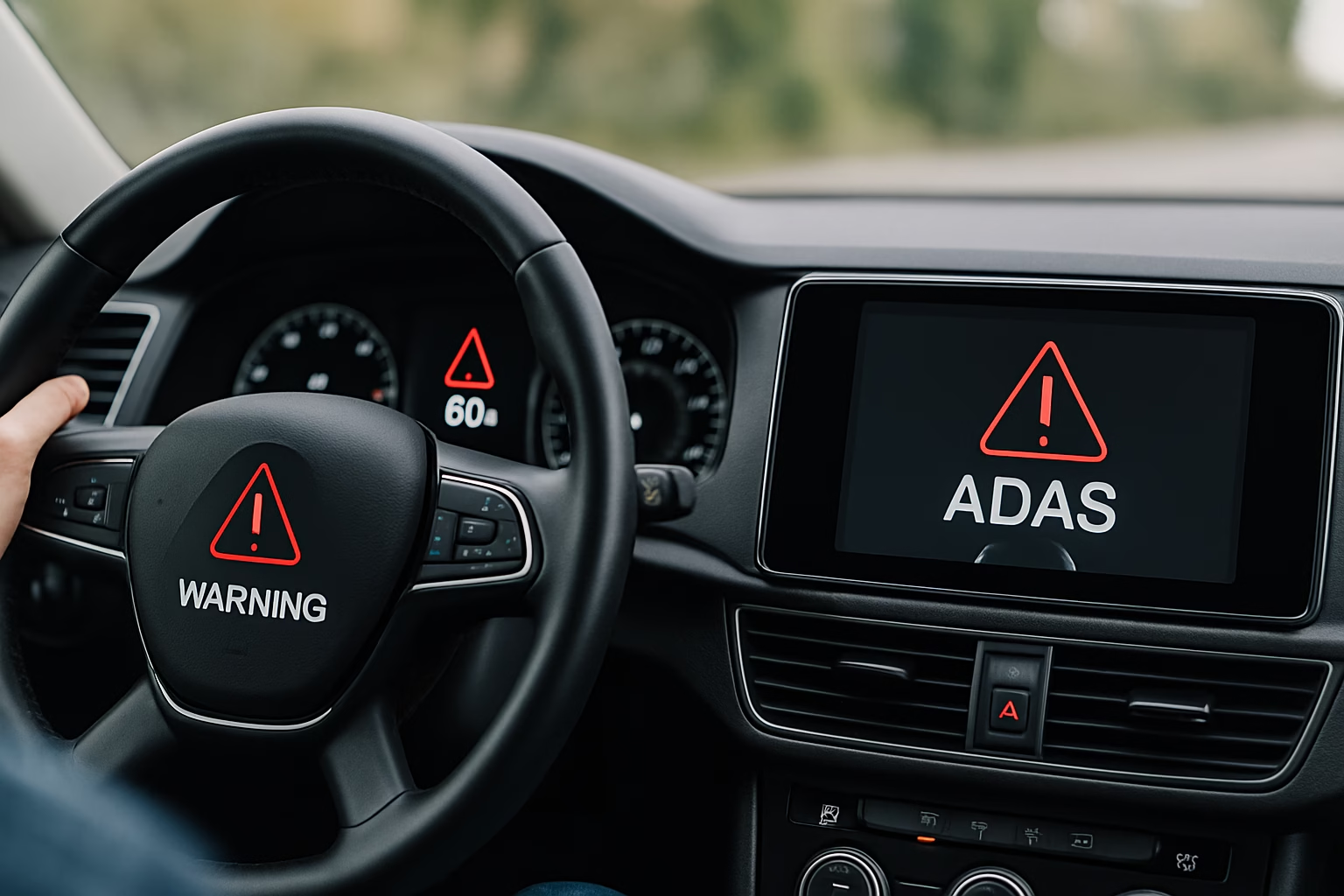As advanced driver‑assistance systems (ADAS) become standard on new vehicles, many drivers are learning to appreciate the support these technologies provide. Adaptive cruise control can take the sting out of long highway drives, lane‑keeping aids can reduce fatigue, and automatic emergency braking can react faster than a human in some situations. But just because your car has sensors and software watching the road doesn’t mean you can switch off your brain. These tools are assistance systems, not autopilot.
ADAS relies on cameras, radar, ultrasonic sensors and increasingly sophisticated software. Each manufacturer packages the same core functions under different brand names, as we covered in our guide to recognising brand‑specific names for adaptive cruise control. Whether it’s Subaru’s EyeSight or Toyota’s DRCC, the underlying principles are similar: sensors detect vehicles and lane markings and the computer applies steering or braking assistance when it judges it necessary. The system can ease the driving burden, but it also introduces a new set of things to monitor.
So how do you know when not to trust your ADAS? Drivers should be alert for signs that the system is confused or failing. The first red flag is a proliferation of warnings. If the forward‑collision warning or lane departure alert chimes repeatedly when nothing is happening, your sensors may be dirty, obstructed or misaligned. Bugs, road grime or fogged camera lenses can cause false positives. A misaligned radar sensor after a minor bumper tap can throw off distance measurements. When your dashboard lights up, pull over when safe, clean the sensors according to your manual and, if the problem persists, have your system checked and re‑calibrated by a professional.
Weather and road conditions are another major factor. Heavy rain or spray can blind a forward‑facing camera, and thick fog can render radar less effective. Bright sun low on the horizon can cause glare or lens flare, and snow or ice can cover sensors entirely. Lane‑keeping assist relies on clear lane markings; faded lines, roadworks, or unusual markings at intersections can confuse the software and cause it to drift or ping‑pong between lanes. If you notice your steering assistance struggling to centre the vehicle or if the system disengages suddenly, take control and be prepared to drive unaided. It is always legal and sensible to override assistance if you feel uncomfortable.
Be especially cautious after any modifications or repairs. Replacing a windshield, adjusting suspension height or fitting aftermarket bumpers can affect sensor alignment. Even changing your tyre size or ride height can alter the camera angle enough to require a recalibration. Many manufacturers require a static or dynamic calibration procedure after a wheel alignment or bodywork repair. If your car has recently been in a shop, ask whether the ADAS sensors were checked. If you install lift kits or lower your car, be aware that the altered geometry may prevent the system from working correctly.
Another sign that something is amiss is unexpected acceleration or braking. Adaptive cruise control should maintain a smooth following distance, but a dirty radar sensor can cause the system to misjudge closing speeds. Phantom braking, where the car brakes hard for no obvious reason, has been reported in various makes. Similarly, on hilly roads the system may accelerate aggressively to maintain speed or lose speed as the radar points up or down. Pay attention to how your car behaves and be ready to take over using the pedals. If false braking becomes frequent, disable the cruise control and have the sensors inspected.
Drivers should also be wary of overreliance. It’s easy to get lulled into a sense of security when your car seems to be doing the work, but it’s vital to understand the limitations described in your vehicle’s manual. Some lane‑centering systems only operate above certain speeds or require clearly marked lanes. Automatic emergency braking might not recognise motorcycles, pedestrians at night or cross traffic. If you’re not sure, assume the system will not help and be ready to act. Keep your hands on the wheel and your eyes on the road even when the system is engaged.
If your car begins to behave in ways you don’t understand—jerky steering corrections, delayed acceleration, warnings in the instrument cluster that persist—take it seriously. First, clean the sensors and cameras. Second, update your car’s software if updates are available; manufacturers often improve detection algorithms. Third, schedule a professional diagnostic or calibration. Many independent workshops and dealer service departments now specialise in ADAS alignment, and as we’ll cover in our calibration‑focused articles, proper tools and processes are essential.
There are also times when it’s best to turn the system off entirely. Off‑road or on rough gravel surfaces, lane‑keeping and adaptive cruise can become disorienting. In heavy snow, the sensors may be blocked. In city centres with tightly spaced objects, blind‑spot warnings can be constantly triggered. Know where the disable buttons are and practise turning off features without taking your eyes off the road. We’ll explore quick ways to disengage these systems in an upcoming post, but start by familiarising yourself with your car’s menus.
Ultimately, ADAS should be a co‑driver, not a chauffeur. Pay attention to red flags like false warnings, erratic behaviour, sensor obstruction, and changes after repairs. Learn how to maintain and recalibrate the system when needed. And most importantly, keep your attention on driving. For more on how different manufacturers name their ADAS features, check out our guide to brand‑specific names for adaptive cruise control. Understanding how your car’s assistance works will make you a safer, more confident driver, and you’ll be less likely to be caught off guard when technology falls short.

Hiran Alwis is an automotive lecturer and ADAS specialist with over 15 years of experience in diagnostics, advanced safety systems, and technical training. He founded ADAS Project to help everyday drivers and workshop technicians understand and safely use advanced driver assistance systems.
